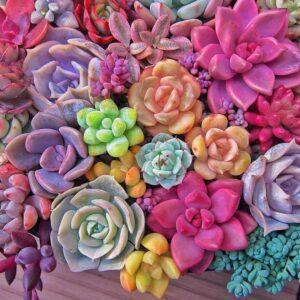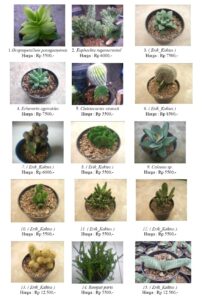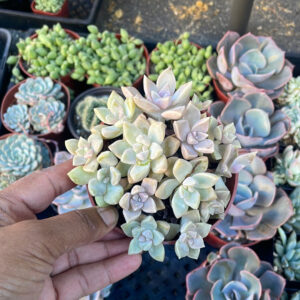Kalanchoe, a genus of succulent plants, is celebrated for its vibrant blooms and resilience. However, alongside their aesthetic appeal, concerns arise regarding their safety for pets, especially for cats. Understanding the potential toxicity of Kalanchoe is vital for pet owners who cherish these plants. This article delves into the implications of Kalanchoe for feline health, the symptoms of toxicity, and essential guidance for mitigating risks.
Before introducing Kalanchoe into a household with cats, it is crucial to consider the elements of pet safety. As you cultivate your indoor garden, knowledge about which plants are safe can prevent distress and emergencies.
What Makes Kalanchoe Toxic?
Kalanchoe species are known to contain compounds called bufadienolides, which can lead to toxicity in cats. These compounds, resembling digitalis-like cardiac glycosides, interfere with cardiac function. While the level of toxicity may vary among Kalanchoe types, even a small consumption can elicit adverse reactions in vulnerable felines. Thus, pet owners should exercise caution when selecting plants for their homes.
Why Cats Are More Vulnerable
Cats possess unique physiological characteristics that may amplify the effects of certain plant toxins. Their smaller size, combined with a distinct metabolic pathway, means that even trace amounts of toxic substances can lead to pronounced symptoms. When it comes to Kalanchoe, the implications for cat health necessitate heightened awareness among pet parents. Notably, common house cats are curious creatures, often investigating their environment through chewing and tasting. This behavior unfortunately increases their risk of exposure to poisonous plants.
Recognizing Symptoms of Kalanchoe Poisoning
Being knowledgeable about the signs of Kalanchoe toxicity is essential for any cat owner. Early recognition can significantly influence the outcome of accidental ingestion. Symptoms typically manifest within a few hours of consumption and can include:
- Vomiting, which may be accompanied by drooling
- Diarrhea, sometimes with blood present
- Lethargy or significant weakness
- Loss of appetite, leading to noticeable weight loss
- Abnormal heart rhythms or disturbances
- Neurological symptoms, including tremors or seizures in severe cases
If you observe any of these symptoms in your cat, seek veterinary help immediately. Quick intervention can save your pet from severe complications associated with Kalanchoe poisoning.
Preventing Toxicity: Tips for Responsible Plant Ownership
While many pet owners cannot resist the allure of Kalanchoe, there are proactive measures to ensure the safety of your feline companions:
- Placement and Accessibility: Consider where you position your Kalanchoe. High shelves or hanging baskets can prevent cats from accessing plants, thus reducing the risk of ingestion.
- Educate Yourself on Alternative Plants: Investigate non-toxic options that can provide similar aesthetic benefits without the associated health risks. Popular cat-safe plants include spider plants, Christmas cacti, and certain varieties of succulents.
- Training and Redirecting: Train your cat to avoid certain areas or objects. Reinforcing boundaries and redirecting their curiosity to safe toys can minimize unwanted plant interactions.
- Creating a Separate Space: Design a designated “no plants” zone for your cats wherein Kalanchoe and other potentially toxic plants are out of reach. This can be an effective way to establish safety in your pet-friendly space.
What To Do If Your Cat Ingests Kalanchoe
In the unfortunate event of ingestion, immediate action is critical. First, assess your cat’s symptoms and interactions with the plant. If ingestion is confirmed, understand that time is of the essence. Contact your veterinarian or a pet poison control hotline for guidance. They may recommend inducing vomiting or other immediate care protocols based on your cat’s condition.
As you navigate the complexities of pet ownership and plant care, communication with your veterinarian can facilitate a deeper understanding of any potential hazards connected to your home environment. Keeping open lines of communication can empower you as a pet owner to make informed decisions regarding your indoor botanical selections.
Understanding the Toxicity Spectrum
It’s essential to recognize that not all Kalanchoe plants are created equal in terms of toxicity. Different species can exhibit varied levels of toxicity, with some being more harmful than others. Therefore, it is crucial to research specific Kalanchoe varieties if you’re particularly fond of these plants. Knowing which types pose higher risks can inform your decisions and selections.
To encapsulate, cats and Kalanchoe may not be the perfect pair. The beauty of Kalanchoe plants should not be overshadowed by potential health risks. By understanding the risks, symptoms, and preventative measures outlined in this article, you can ensure a harmonious coexistence of vibrant plants and playful felines in your home. Remember, the safety of your cherished pets should always be the foremost consideration in your plant choices.





Leave a Comment